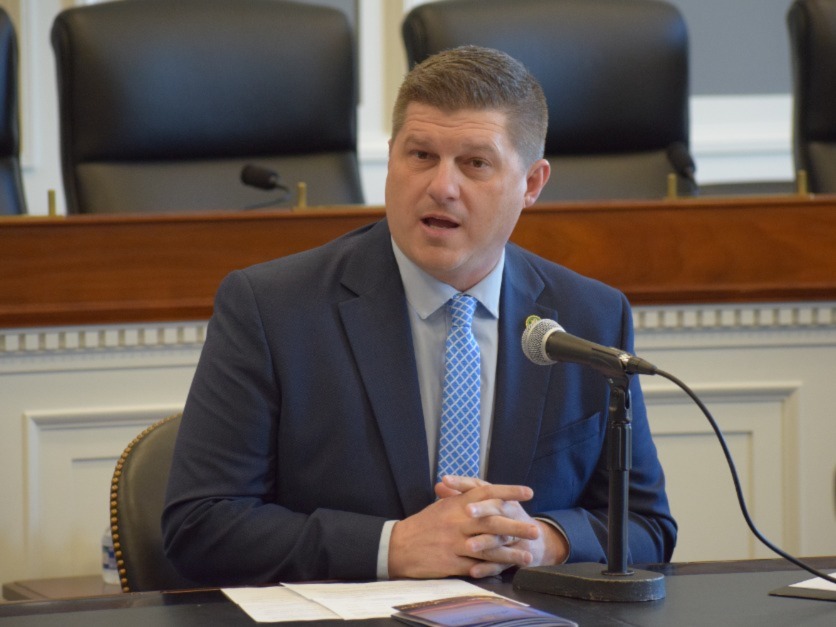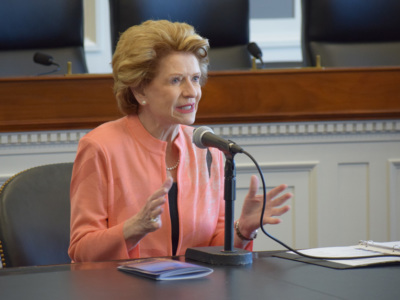Congressional approval of the debt ceiling agreement between President Joe Biden and House Speaker Kevin McCarthy has triggered a new debate about the impact of the changes made to SNAP work requirements, with Republicans insisting they take another crack at the issue during the upcoming farm bill.
The debt ceiling bill gradually raises the maximum age for SNAP work requirements from 49 to 54 and enacts new exemptions from the work rules for homeless individuals, veterans and youth aging out of foster care ages 18 to 24. All of the changes would sunset after fiscal 2030.
In a surprising twist ahead of the final vote, the Congressional Budget Office estimated the changes would increase the cost of SNAP by $2.1 billion over a 10-year period and that about 78,000 would gain benefits in an average month.
During Agri-Pulse’s Food and Ag Issues Summit held in California on Monday, Rep. Brad Finstad, the Minnesota Republican who chairs House Ag's nutrition subcommittee, called the CBO score “hogwash,” and said he expects a Wednesday committee hearing to begin to dig into those numbers and try to understand CBO’s math.
A House Agriculture Committee fact sheet released ahead of House action on the bill said it would be “virtually impossible” for 78,000 people to be added to SNAP rolls immediately because some of those same people would have already been eligible for SNAP under current law because of exemptions states can provide on their own.
 Rep. Brad Finstad, R-Minn.
Rep. Brad Finstad, R-Minn.
Katie Bergh, senior policy analyst at the Center on Budget and Policy Priorities, estimated nearly 750,000 older adults aged 50-54 are at risk of losing food assistance through an expansion of the existing SNAP work reporting requirements. She told Agri-Pulse the new exemptions for those experiencing homelessness, veterans and former foster youth are positive and important improvements, but they also highlight the underlying and harmful issues with SNAP work requirements.
“From our perspective, making improvements for some people doesn't justify expanding a harmful policy that takes them away from other very low-income people, which is what the effect of expanding the age range of people subject to the work reporting requirement would be,” Bergh said.
“I think the discussion about whether there's ultimately going to be a net increase or net decrease in overall SNAP participation over the next decade misses the main point: SNAP’s work requirements are a failed policy and expanding it to those older adults will unquestionably result in many very low-income people losing that $8 a day they rely on to afford groceries,” Bergh said.
Kathy Hempstead, senior policy adviser at the Robert Wood Johnson Foundation, told Agri-Pulse some states won’t benefit as much from the new exemptions and will feel more impact from older adults losing benefits. “Although nationally it may be a wash, in some states it’s going to be a big deal,” Hempstead said.
Even though Senate Agriculture Committee Chairwoman Debbie Stabenow, D-Mich., said as far as she’s concerned, “the issue of work requirements is settled for this Congress” as leaders head into the farm bill debate, House Republicans may have a different view as they work to understand the math used to calculate the CBO score.
For his part, Finstad said there may be additional savings from some of the SNAP reforms within the debt ceiling bill that could be used, and last week's debt ceiling vote could be a precursor to discussing more changes in the farm bill.
“It was a very strong bipartisan vote to increase that age requirement. It wasn't just a single party saying, 'That's the way we need to go.' So, I think it was an incremental step in the right direction to be serious about where we are today and where we need to be in the future,” Finstad said.
The debt ceiling bill reduces the state-level exemptions from 12% to 8% of total SNAP participants. Currently, states can make those exemptions on an individual participant basis up to 12% of the state's total SNAP caseload. As an example, those who have a mental illness would not have to meet the work requirements. Previously, states could give those exemptions to the homeless, veterans or those exiting foster care, but likely now wouldn’t need to use as many of the case-by-case exemptions.
CBO claimed the impact of the reduction from 12% to 8% is “negligible,” but the House Agriculture Committee also questioned those CBO cost estimates. “In 2018, a reduction in exemptions from 15% to 12% was estimated to be at $310 million over 10 years. These are directly contradictory,” the fact sheet said.
Don’t miss a beat! It’s easy to sign up for a FREE month of Agri-Pulse news! For the latest on what’s happening in Washington, D.C. and around the country in agriculture, just click here.
In addition, any accumulated exemptions could previously be stacked and rolled forward. The debt bill clarifies that exemptions cannot be accumulated and requires additional reporting from USDA. When the 2018 farm bill lowered the exemption from 15% to 12%, it allowed states to "continue to accrue exemptions and retain any carryover exemptions from previous years, consistent with the current law," according to the farm bill conference report joint explanatory statement.
The bill also requires USDA to make available all state requests for those ABAWD waivers and supporting data from states and the subsequent USDA approval of the waivers within 30 days of enactment. Finstad said this new requirement of reporting from USDA will bring “sunshine and light to the behind-the-scenes way that government is administering these programs.”
On Monday, Stabenow joined Senate Finance Committee Chairman Ron Wyden, D-Ore., Senate Banking, Housing and Urban Affairs Committee Chairman Sherrod Brown, D-Ohio, and Senate Veterans’ Affairs Committee Chairman Jon Tester, D-Mont., in a letter calling on Biden administration leaders to “swiftly and equitably implement exemptions for vulnerable populations.”
 Senate Ag Committee Chair Debbie Stabenow, D-Mich.
Senate Ag Committee Chair Debbie Stabenow, D-Mich.
“Guidance issued to states from your agencies should ensure related policies are implemented consistently across all states to equitably reach the highest number of eligible participants, reduce administrative and paperwork burdens on both state agencies and SNAP participants and to ensure participants are adequately screened for exemptions prior to losing access to benefits,” the senators wrote. “This is particularly timely as states work to reinstate the ‘able-bodied’ time limits following the end of the Public Health Emergency.”
The debt ceiling bill also emphasizes SNAP as an employment program by saying the “program includes as a purpose to assist low-income adults in obtaining employment and increasing their earnings.”
Hempstead said research shows SNAP continues to be ineffective at encouraging work; other options that can accomplish transitioning SNAP participants out of the program include work and training programs, affordable child care, cash assistance and an increased minimum wage.
“That’s the thing about work requirements that I think is so disagreeable is that it saves the government money by this collateral damage by these people losing their benefits, most of whom really are still eligible for their benefits,” she said. “If you want to increase your labor force participation or employment, then don’t direct your efforts at a population that either is working or can’t work.”
For more news, visit www.Agri-Pulse.com.


